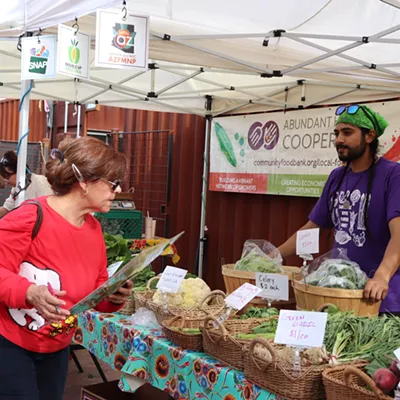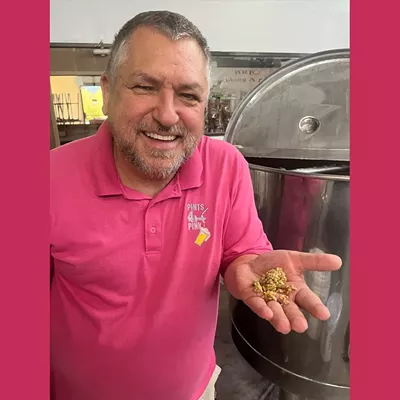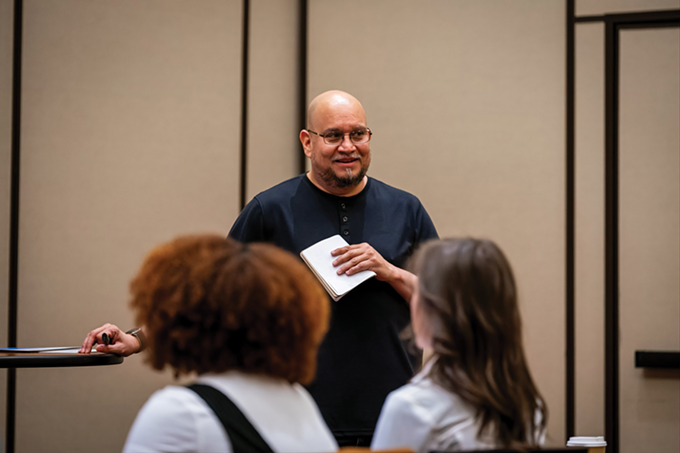
Frank Velásquez Jr. remembers the moment he realized something was deeply flawed in the way most charitable organizations – including his own – appealed to donors in their year-end “giving season” drives.
“I was new to the nonprofit world, and I went to this conference where they focused on how to appeal to donors,” said Velásquez, who now works as director of workforce advocacy for the Tucson Metro Chamber, as well as directing his own organization, 4 Da Hood, which offers group leadership coaching by and for people of color. “And the way they described the typical charitable donor was ‘older White female,’ so there was a lot of focus on how do you appeal to that particular demographic.”
What they were taught, Velásquez said, was essentially that the “White savior” narrative that always worked so well in movies, from “Dangerous Minds” to “The Blind Side” and “The Help,” worked in real life, too. The attending CEOs of various nonprofit charitable organizations were instructed to focus their year-end fundraising appeals on telling stories of the near-unsurmountable hardships facing the people they served, promoting the message that only the donors’ dollars could rescue these poor unfortunates from their cycles of misery.
Velásquez applied the technique, too, profiling a young lady for his organization’s year-end appeal that “focused only on her challenges,” he said. “We didn’t focus on her resilience. We didn’t focus on the positive things that she was doing or how she had moved from her bad situation.” Worse yet, the organization didn’t keep her identity hidden, listing her name and even including her photo in their marketing materials.
“She was devastated after reading it,” Velásquez recalled. “She said, ‘That’s not me! Yes, those things happened to me, but that’s not who I am now. You focus way too much on the negative parts of my life without focusing on what I’m doing good.’
“That just shook me, and when I left that organization in 2020, that’s when I really started to take another look at how the language that we use to engage donors can inadvertently be ‘othering’ the communities that we work with,” he said, referencing the all-too-common practice of marginalizing one community as subordinate outsiders to the dominant social group.
“Are we saying things that promote the donor as the singular, you know, ‘hero’ for this story? And if so, how do we talk differently? Instead of perpetuating harmful stereotypes of groups of folks, why not focus on their aspirations? What makes them resilient? What makes them great?”
That became his template for the workshops he now leads for the Community Foundation for Southern Arizona, which connects philanthropic donors to charitable nonprofit organizations. Velásquez’s workshops teach other nonprofit leaders how to use “asset-based language” to shift the narrative lens away from the old White savior perspective to one that “uplifts and honors” the strengths and capabilities of the communities they serve, inviting the donors to become not just passive contributors but “active partners” in the communities’ efforts to drive positive change.
“A big piece of it is just bringing people into your space,” he said – along with sharing stories of success and the impact of donations in follow-up communications. “The donor feels a stronger connection to the organization beyond just a financial transaction.”
Of course, for many donors during the holiday giving season, the contribution is just that: a strategic charitable donation made at the end of the year to secure tax deductions. For them, picking which charity to donate to is less important than deciding whether to donate cash or appreciated non-cash assets. It’s why a well-known organization such as Phoenix Children’s Hospital regularly pulls in more than $40 million in donations annually, while smaller organizations are forced to cut staff come January. People go with what they know.
“That’s why we strive to stay connected with the folks in our community that have already connected with us,” said Nyssa Miccio, marketing director for Community Investment Corporation, a 26-year-old Tucson nonprofit that helps aspiring homeowners get into housing through tax credits and down payment assistance, provides financing to small businesses and nonprofits and assists schools with getting access to capital. Miccio says previous donors, along with the people CIC has helped in the past, remain their best advertising.
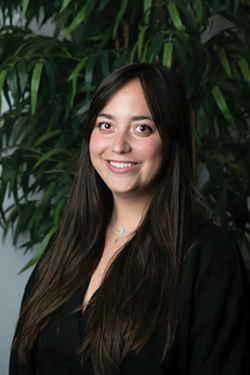
“They’re really our biggest champions in helping to spread the word about our programs and then hopefully persuade others to donate,” she said. At present, Miccio is connecting with ongoing donors to spread positive word-of-mouth about the organization’s BIPOC Community Managed Loan Fund, a revolving loan fund supporting BIPOC (Black, Indigenous and People of Color) small businesses with a 0% interest rate. In the two years since its launch, the program has already distributed over $400,000 in loans across Southern Arizona.
“It’s a revolving loan fund, so once entrepreneurs pay back their loan, that goes to the next person that the committee chooses to fund,” she said. “Donating to that means that you’re not only supporting small businesses and entrepreneurs of color in our community, but you’re supporting the local economy as well.”
Even with the good word-of-mouth, though, Miccio concedes it can be hard to compete with the bigger fish in the philanthropic pool, who always seem to be scraping for the same donation dollar at this time of year. Despite its successes, CIC is currently facing laying off nearly 25% of its staff, leaving only 17 employees to run nearly a dozen programs.
“We will still be able to do all of them, just in a different capacity,” said Miccio.
Helping promote oft-overlooked nonprofits is a big part of the mission at Community Foundation for Southern Arizona, which helps philanthropic community members connect with causes they care about.
“They call me often and say, ‘Who’s doing great work?’ And I help match their interests,” said Kelly Huber, CFSA’s vice president for philanthropy. Through such donor-advised funding, the foundation annually gives out plenty of grants to nonprofits, distributing over $18 million last year alone.
“We give them information that speaks to both the heart and the head,” added Tamara McKinney, CFSA’s marketing director. “Because I think that you have some donors who are much more heart-driven, and then you have some donors who are a little bit more analytical and they want data.”
“They can also be both!” Huber interjected. “There are donors that care very deeply about their community, and also care that it’s a good tax advantage strategy for them. We don’t have to think of them as mutually exclusive motives.”
CFSA typically offers donors a kind of menu, asking whether they’d like their donation to go to organizations dedicated to education, animal welfare, arts and culture, children and youth, environmental sustainability, diversity, equity and inclusion, or a general “greatest need” fund.
“With the greatest need fund, you can just give to this and then know that the community foundation will steward those resources back out to the community for the greatest need at the time,” Huber explained. “For example, we had an organization that needed to hire a billing specialist, to handle the reimbursements for some federal grants they’d received. But trying to get a donor to pay for someone to do paperwork – that sounds kind of boring.” Through the greatest need fund, the organization was able to hire the paper-pusher, which allowed them to do more good work.
Huber emphasizes the need for such “unrestricted” donations, where organizations are trusted to communicate their needs, instead of donors dictating how the funds are used.
“We call it trust-based philanthropy,” she said. “It’s really trusting organizations to tell you what they need most and then making the ability to access funding from foundations and donors as easy as possible.”
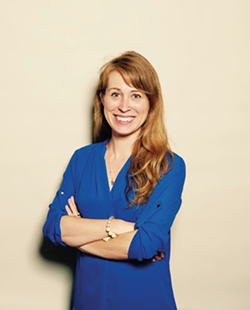
Fortunately, the next generation of philanthropists appears open to that kind of giving, according to Lori Poer, a senior director at Blackbaud, a South Carolina-based software company that provides data and services to the nonprofit sector.
“The Gen Z givers we surveyed say that the top reasons for giving are either that they strongly believe in the mission and the cause, or that they trust the organization to do the right thing,” Poer said.
But reaching those givers has become trickier than in the past. “Only 28% of Gen Zers who give to the charitable sector tell us that they have an idea of how much they’ll budget for giving each year, and 42% of them say that their support is more spontaneous,” added Poer. “It’s based on who asks them and what pulls at their heartstrings at just the right time.” That means doing outreach at events like concerts and engaging with (gulp!) influencers on social media.
“It’s really important to create opportunities for them to give just within the flow of their daily lives,” Poer said. “That’s a challenge for the nonprofit sector, because it does push us beyond some of the traditional ways we’ve engaged with other generations.”

